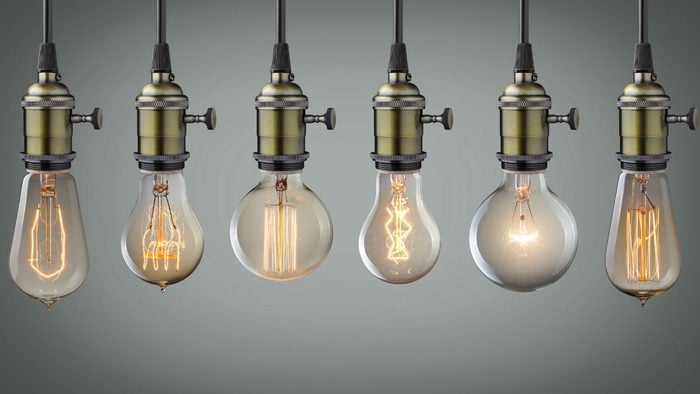
The complicated (but well-told) story about the G spot
Why don’t we know enough about the G spot? It’s difficult to believe how little science understands the female orgasm, including how we experience clitoral versus vaginal orgasms.
The source of clitoral orgasms is obvious: They result from clitoral stimulation with or without vaginal penetration. What has eluded science is the source of vaginal orgasms, pleasure that occurs with penetration but without clitoral stimulation.
Now researchers are closer than ever to an anatomical explanation as to why some women do and some dons’t experience vaginal orgasms. And it has everything to do with what we know as the G spot, which, it turns out, is not technically a spot at all.
Read more to find the three things you need to know about your G spot.

1. The history of the G spot
As one of the authors of The G Spot and Other Discoveries about Human Sexuality, Beverly Whipple is the scientist famous for making the G spot a household term starting in 1982 (although its’s named after German gynecologist Ernst Gräfenberg, who first did research on the subject in the U.S. in the 1940s). Despite the books’s title, “we never stated that the area was an anatomical entity,” says Whipple, a professor emerita at Rutgers University in Newark, N.J., where she still contributes to groundbreaking studies with behavioural neuroscientist Barry Komisaruk on the biology and neurophysiology of orgasms.
“We said it was an area you can feel through the anterior vaginal wall [the side nearest the belly], not something on the vaginal wall,” she points out, still seemingly baffled by the widespread misinterpretation.
Even researchers seem to get it wrong. Two years ago, when a Kings’s College study in the U.K. could not find a genetic link for the G spots’s presence in twins (a possible hallmark of a biological finding), it sparked headlines such as “G spot does not exist.”
But Whipple says the scientists didn’t ask the right question: “They asked twins if they felt they had a specific structure on the wall, not through the wall.” While the King’s College study has been widely discounted for that reason, the truth is that, quite simply, the G spot is not a spot; it is something much more complex.

2. You have a G Zone, Not a G spot
Komisaruk, a Rutgers University distinguished professor of psychology, prefers to call the area the G zone or G region. “We now have clear evidence as to how some women can experience pleasure through [stimulating] the anterior vaginal wall.”
Researchers have studied cadavers, and have also used imaging devices such as MRI (magnetic resonance imaging) to look inside live women while their anterior vaginal wall was being either self-stimulated or stimulated with a penis. What did they find? “The women experienced pressure against a confluence of structures, all of which make up the G zone” including the anterior vaginal wall, Skene’s glands [sometimes referred to as the female prostate] and the clitoral “legs,” he says.
Essentially, the external nub of the clitoris is only the tip of a much larger structure. Meanwhile, internally, the clitoris is shaped like a wishbone, with two extensions or “legs” that straddle the vagina, explains gynecologist Dr. John Lamont, a, sexual medicine specialist at Hamilton Health Sciences in Hamilton, Ont.
The new theory behind vaginal orgasms is that they are a result of pressure applied against all of these structures, scientifically called the “CUV area” (short for clitorourethro-vaginal area).
So is a vaginal orgasm really just a kind of clitoral orgasm, stimulated internally? Based on Komisaruk’s research, the answer is no, for two reasons. First, he used functional MRI to map how women’s brains “light up” depending on where we are stimulated. “Different nerves carry the sensation from the vagina, clitoris and cervix to the same region of the sensory cortex in the brain,” he says. “The mapping shows that the vagina and the cervix have their own sensory pathways, distinctly different from the clitoral sensory pathway.”
Second, Komisaruk studied women who were paralyzed from the waist down yet were able to experience self-stimulated vaginal orgasm even when their clitoris had no sensation. When the clitoris is stimulated, the pudendal nerve carries sensory data through the spinal cord to the brain, resulting in a clitoral orgasm. But Komisaruks research found that when the clitoral sensation is blocked by a spinal cord injury, vaginal and cervical sensation could still occur via a newly recognized nerve pathway. It’s called the vagus nerve, a long, cranial nerve that meanders through the abdomen with branches extending out into other parts of the body, including, if Komisaruk is right, into the CUV area.

3. You’re unique, and so is every woman’s G spot
What does all this new science really mean? If you have yet to experience a vaginal orgasm, there’s the possibility that your internal structure, or CUV area, may not be “built” in such a way that it is sensitive to stimulation. According to several studies by Dr. Emmanuele Jannini, a professor of endocrinology and sexology at the University of L’Aquila in Italy, there are significant differences among women in the thickness of this CUV area.
Jannini found that the larger the CUV area (measured by ultrasound on live subjects), the greater the ability to have a vaginal orgasm. The reason? He theorizes it’s because a bigger area means more blood vessels, muscles, glands, etc. Jannini has also studied cadavers and found that some have minimal CUV areas. “I am absolutely sure that the cadavers I studied that were almost devoid of nerves, glands, vessels and muscles in the CUV would have had a lot of anatomical difficulties, when alive, to experience a vaginally activated orgasm.”
Bottom line: “For lots of women, vaginal orgasms are just not possible without added genital stimulation,” says Lamont, “but only because they have limited sensitivity in the area, not because there is something wrong or dysfunctional in them. Some women are sensitive in their nipples. Some like to have their armpits kissed. Simply, all women have different primary erogenous zones.”
